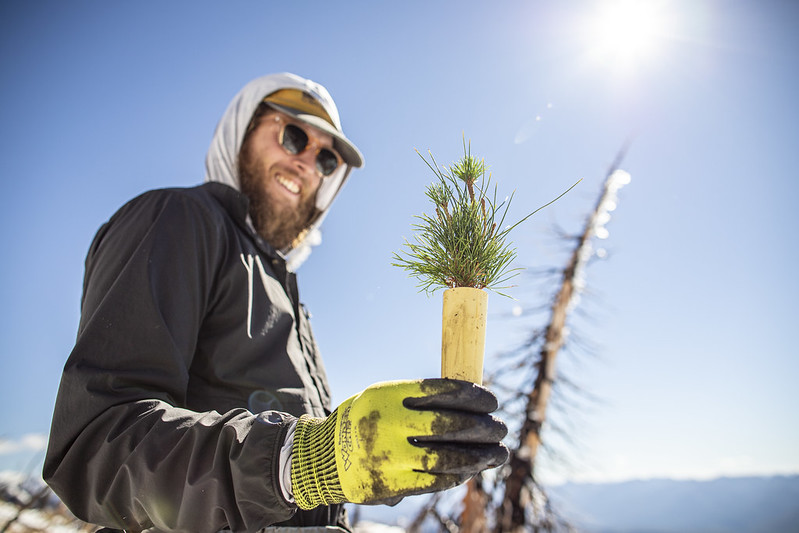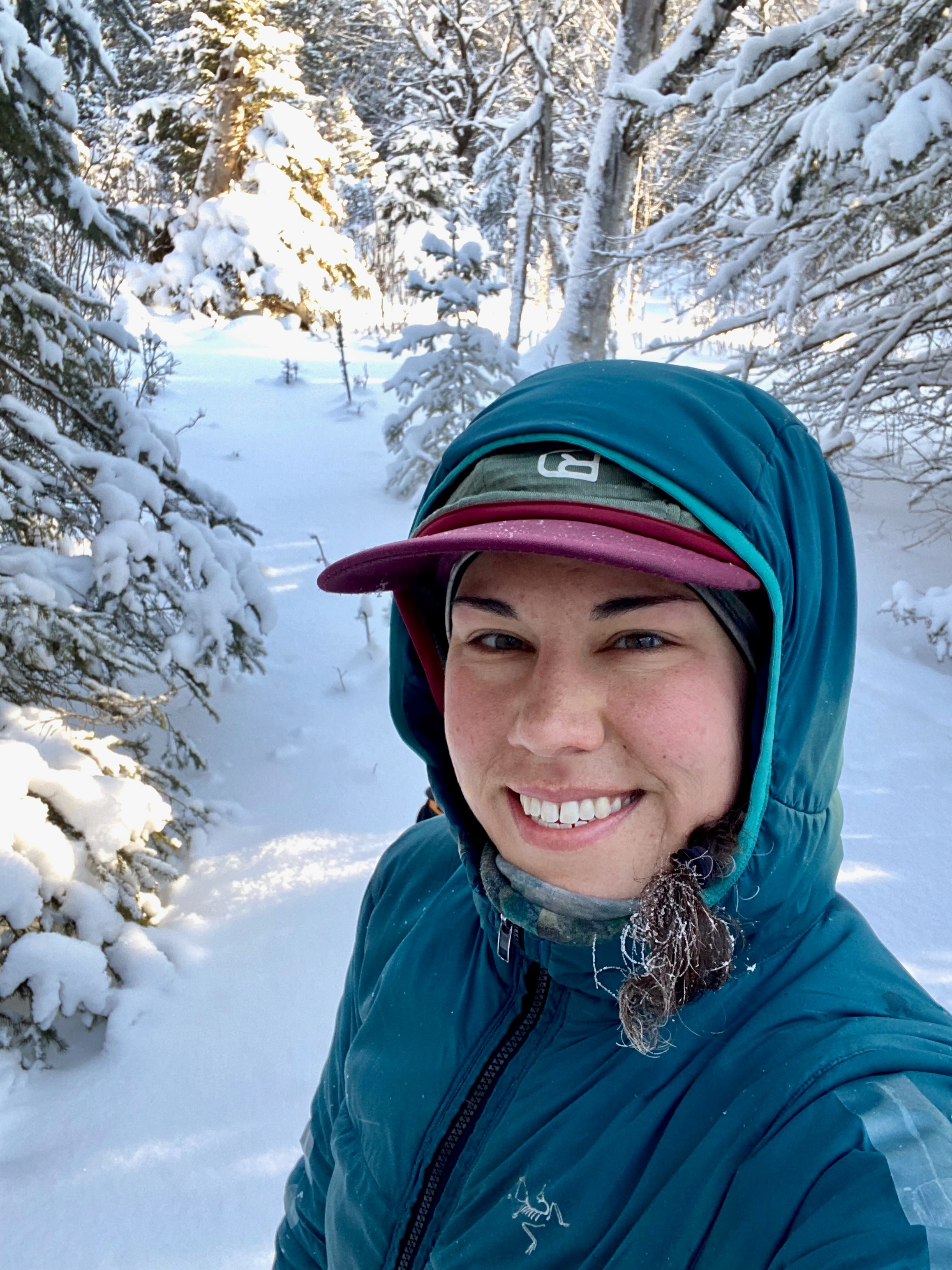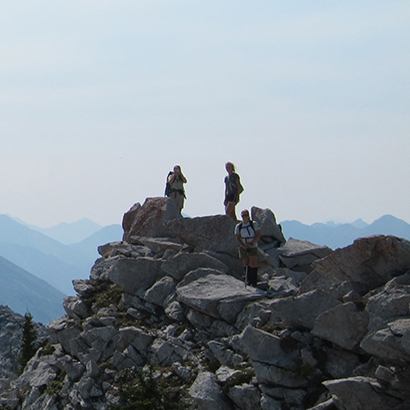Fellows
2024: Josh Beisel
"Post-fire tree regeneration in subalpine forests: Implications for whitebark pine and wilderness"
 Hailing from Western Washington, Josh is a PhD student in the Systems Ecology program at the end of his second year. He earned his bachelor’s degree in biology from Occidental College in 2020 and has several seasons of work experience with the US Forest Service and National Park Service. His research interests include fire ecology, ecological forestry, dendrochronology, and global change impacts on forested systems, especially regarding the future of whitebark pine (Pinus albicaulis; WBP). When not doing fieldwork or measuring tree cores, he enjoys hiking, backcountry snowboarding, and cooking new recipes.
Hailing from Western Washington, Josh is a PhD student in the Systems Ecology program at the end of his second year. He earned his bachelor’s degree in biology from Occidental College in 2020 and has several seasons of work experience with the US Forest Service and National Park Service. His research interests include fire ecology, ecological forestry, dendrochronology, and global change impacts on forested systems, especially regarding the future of whitebark pine (Pinus albicaulis; WBP). When not doing fieldwork or measuring tree cores, he enjoys hiking, backcountry snowboarding, and cooking new recipes.
Whitebark pine populations have been in stark decline for decades and continue to face myriad threats. Half of all US WBP habitat is within congressionally designated wilderness, and future habitat under climate change is increasingly concentrated in wilderness. The recent designation of whitebark as Threatened under the Endangered Species Act underscores the need to fill knowledge gaps regarding its ecology, including how populations respond to climate change and shifting fire regimes. As an integral piece of high-elevation ecosystems in the Western US, the absence of WBP would constitute a significant ecological and cultural loss. A more comprehensive understanding of outcomes after fire in whitebark pine ecosystems will be necessary to ensure the persistence of WBP into the future.
Josh plans to leverage a dataset he collected in the high-elevation portions of the Selway-Bitterroot Wilderness to explore questions related to post-fire regeneration dynamics across the elevational range of WBP. The results of this project will provide knowledge supporting federal wilderness managers in making informed decisions regarding future trajectories of burned high-elevation forests.
2023: Brenna Cassidy
"Do wilderness areas provide refugia for wolves from human harvest?"
 Brenna is from northern Illinois where her curiosity for the natural world grew in oak forests and tall grass prairies. She completed a degree in wildlife ecology at the University of Wisconsin-Stevens Point and spent summers during her undergrad in northern Wisconsin or Yellowstone National Park. After graduating in 2012, she returned to Yellowstone and worked on projects studying wolves, birdsand cougars. She started at University of Montana in 2018. Her PhD research examines factors driving survival and population regulation of gray wolves in Yellowstone. Outside work, she can usually be found trail running, skiing, mountain biking or in the pottery studio.
Brenna is from northern Illinois where her curiosity for the natural world grew in oak forests and tall grass prairies. She completed a degree in wildlife ecology at the University of Wisconsin-Stevens Point and spent summers during her undergrad in northern Wisconsin or Yellowstone National Park. After graduating in 2012, she returned to Yellowstone and worked on projects studying wolves, birdsand cougars. She started at University of Montana in 2018. Her PhD research examines factors driving survival and population regulation of gray wolves in Yellowstone. Outside work, she can usually be found trail running, skiing, mountain biking or in the pottery studio.
Federally designated wilderness areas are often thought of as completely protected against human impact. However, wilderness areas are not immune to human influence. Even in the 22-million-acre Greater Yellowstone Ecosystem (GYE), effects of climate and land use change are quickly being realized. The heart of the GYE is Yellowstone National Park (YNP), which contains 2 million acres of recommended wilderness area, that while not officially designated, are managed as such to maintain their wilderness character.
Transboundary ecosystem management of wilderness areas is fraught with difficulty especially for charismatic, yet controversial, species such as gray wolves. Perhaps no species epitomizes wilderness better than the wolf, and yet, even in the GYE they face challenges. Since reintroduction in the mid-1990s, wolves have restored critical ecological processes, yet faced increasing harvest in the last 12 years in adjacent areas of Montana, Wyoming, and Idaho.
Protection afforded by wilderness areas to wolf population viability and the ecosystem function of wolves are at risk. Across North America, there are clear patterns of higher wolf survival in wilderness areas than non-wilderness, and loss of ecosystem processes such as trophic cascades. Therefore, the ecological function of wilderness areas, and the viability of wolves, could be under threat.
Using 26 years of wolf survival data, she will answer the question: Do wilderness areas provide refugia for wolves from human harvest by acting as buffer zones? Ultimately, the goal of her science is to help inform future GYE wolf hunting regulation decisions of the role wilderness areas.
